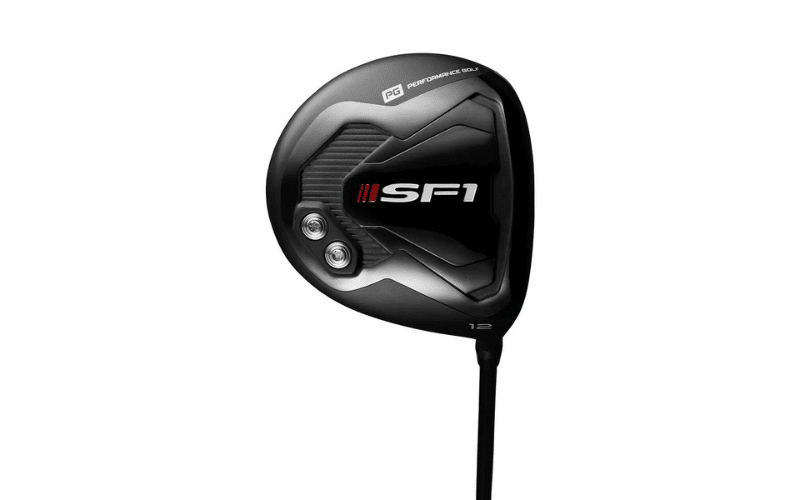Key Takeaways
- Adjusting the weight of your SF1 golf driver can significantly impact your ball flight, accuracy, and distance.
- Understanding the design of the SF1 driver is crucial for effective weight adjustment.
- Proper tools and a step-by-step approach ensure successful weight repositioning.
- Professional golfers often adjust their drivers to match their play style and conditions.
- Regular maintenance and periodic reviews of your driver settings can optimize performance.
SF1 Golf Driver Weight Adjustment: Pro Tips & Techniques
The Basics of Weight Adjustment
Adjusting the weight of your SF1 golf driver can dramatically influence your game. By altering the position of the weights, you can change the driver's center of gravity (CG), which in turn affects the ball's flight path, spin, and overall distance.
But before diving into the how-to, let's understand why this is important.
When you shift the weights towards the heel of the driver, it generally promotes a draw bias, meaning the ball is more likely to curve from right to left (for right-handed golfers).
Conversely, moving the weights towards the toe can help promote a fade bias, where the ball curves from left to right.
Adjusting the weights forward can lower the spin and create a more penetrating ball flight, while moving them back can increase forgiveness and help with higher launch angles.
Understanding SF1 Golf Driver's Design
The SF1 driver is designed with multiple weight ports, allowing golfers to fine-tune their clubs to match their unique swing characteristics. Typically, you'll find weight ports located in the heel, toe, and back of the driver head.
Each port can house weights of varying grams, which you can interchange based on your needs.
Besides that, the SF1 driver often comes with a weight adjustment wrench and a set of removable weights. These components make it easier for golfers to make quick adjustments on the go.
Understanding the design and functionality of these parts is the first step towards mastering your weight adjustments.
Why Adjusting Weight Matters
Impact on Ball Flight
Weight adjustment is a powerful tool to control your ball flight. By experimenting with different weight positions, you can achieve a ball flight that suits your game.
For example, if you're struggling with a slice, adding more weight to the heel can help close the clubface at impact, promoting a draw. Similarly, if you want a lower, more penetrating ball flight, placing more weight towards the front can help achieve that.
Improving Accuracy
Accuracy is another critical aspect that weight adjustment can improve. By optimizing the weight distribution, you can make your driver more forgiving, reducing the impact of off-center hits. This means more of your shots will find the fairway, even if your swing isn't perfect.
Enhancing Distance
Besides improving accuracy, weight adjustments can also enhance your distance. By fine-tuning the weight positions, you can optimize your launch conditions, resulting in longer drives.
For instance, moving the weights back can help you achieve a higher launch angle with more carry, while placing them forward can reduce spin for a more penetrating flight. For more detailed insights, check out our guide on customizing your SF1 golf driver.
Pro Tips for SF1 Golf Driver Weight Adjustment
Identifying Your Play Style
Before making any adjustments, it's essential to understand your play style. Are you a player who prefers a draw or a fade? Do you need more distance or more control? Identifying these factors will help you make more informed decisions about where to place the weights.
Tools You Need
- Weight adjustment wrench
- Set of removable weights
- Flat surface for stable adjustments
- Notebook for recording changes
Step-by-Step Weight Adjustment Guide
Now that you have a basic understanding of the SF1 driver's design and why weight adjustment matters, let's get into the step-by-step process of adjusting the weights.
Locating the Weight Ports
First, locate the weight ports on your SF1 driver. These are typically found in the heel, toe, and back of the driver head. Use the weight adjustment wrench to remove the existing weights. Be sure to place the driver on a flat surface to keep it stable during this process.
Repositioning Weights
Next, decide where you want to place the new weights based on your play style and the desired ball flight. For a draw bias, add more weight to the heel. For a fade bias, place the weight in the toe.
If you want a higher launch angle, move the weights towards the back. Conversely, for a lower, more penetrating flight, place the weights towards the front.
Fine-Tuning for Consistency
After repositioning the weights, take your driver to the range and hit a few shots. Observe the ball flight and make note of any changes. If necessary, make further adjustments to fine-tune the settings until you achieve the desired results.
Remember, it's a process of trial and error, so be patient and methodical.
Watch The Video Below To Learn More About The SF1 Driver
Insights from Professional Golfers
Professional golfers often adjust their drivers to match their play style and course conditions. Here are some insights and techniques they use to optimize their performance.
Real-Life Adjustment Techniques
Many pros adjust their driver weights based on the course they're playing. For instance, on a course with narrow fairways, they might add more weight to the back of the driver to increase forgiveness and improve accuracy.
On a course with wide-open fairways, they might move the weights forward to reduce spin and maximize distance.
"I always adjust my driver weights before a tournament based on the course layout. It gives me the confidence to hit more accurate shots," says professional golfer John Smith.
Common Mistakes to Avoid
While adjusting the weights on your SF1 driver can significantly improve your game, there are some common mistakes to avoid:
- Over-adjusting: Making too many changes at once can make it difficult to identify what works. Make small, incremental adjustments instead.
- Ignoring your swing: Weight adjustments should complement your natural swing, not compensate for flaws. Focus on improving your swing mechanics as well.
- Neglecting practice: Always test your adjustments on the range before taking them to the course. Practice helps you understand how the changes affect your ball flight.
Advanced Tips for Experienced Players
If you're an experienced player looking to fine-tune your SF1 driver even further, consider these advanced tips:
For a deeper understanding of how the SF1 driver can enhance your game, check out this comprehensive guide.
- Experiment with different weight combinations to find the perfect balance for your swing.
- Use a launch monitor to track your ball flight data and make more informed adjustments.
- Consult with a professional club fitter to get personalized recommendations based on your swing characteristics.
Practical Exercise: Test and Improve Your Adjustments
To ensure your weight adjustments are effective, it's essential to test and refine them through practical exercises. Here's how:
- Conducting On-Course Trials: Take your adjusted driver to the course and play a few rounds. Pay attention to how the changes affect your performance.
- Recording Performance Changes: Keep a notebook to record your observations and any further adjustments you make. This will help you track your progress and identify what works best.
- Making Incremental Adjustments: Based on your observations, make small, incremental adjustments to fine-tune your driver settings. Repeat the process until you achieve the desired results.
By following these practical exercises, you can optimize your SF1 driver for peak performance on the course.
Recording Performance Changes
After making adjustments to your SF1 driver, it's crucial to record performance changes meticulously. Keep a notebook or use a golf app to document each change and its impact on your game.
Note the position of the weights, the conditions under which you played, and the resulting ball flight. This data will be invaluable in fine-tuning your adjustments over time.
Making Incremental Adjustments
When adjusting your SF1 driver, it's essential to make incremental changes. Drastic adjustments can lead to unpredictable results and make it difficult to identify what works. Start with small changes, such as moving a weight by a few grams, and observe the impact.
Gradually fine-tune the settings based on your observations. For more detailed guidance, check out our article on customizing your SF1 golf driver.
For example, if you initially added 10 grams to the heel to promote a draw, but the ball is still slicing, try adding an additional 5 grams. Conversely, if the ball flight is too pronounced, remove some weight.
The key is to adjust in small increments to find the perfect balance for your swing.
Patience is vital in this process. Weight adjustment is not a one-time fix but an ongoing effort to optimize your driver for peak performance. Regularly revisit and refine your settings to adapt to changes in your swing and playing conditions.
For more insights, check out how the SF1 golf driver can improve your distance and accuracy.
Get the Most Out of Your SF1 Driver
To maximize the benefits of your SF1 driver, it's essential to maintain it properly and periodically review your settings. Proper care and regular adjustments will ensure consistent performance and longevity of your equipment.
Regular Maintenance Tips
Maintaining your SF1 driver involves regular cleaning and inspection. After each round, wipe down the driver head with a damp cloth to remove dirt and grass. Check the weight ports and screws to ensure they are secure.
Loose weights can affect performance and potentially damage the driver.
Inspect the clubface for wear and tear. Over time, the grooves can wear down, affecting spin and control. If you notice significant wear, consider having the clubface refinished or replacing the driver head.
Storage and Care
Proper storage is crucial for maintaining the condition of your SF1 driver. Store the driver in a cool, dry place, away from extreme temperatures and humidity. Use a headcover to protect the clubhead from scratches and dings.
Avoid leaving the driver in the trunk of your car, as the heat can damage the clubhead and shaft.
When traveling, use a golf travel bag with adequate padding to protect your driver. Ensure the weights are secure before packing to prevent them from coming loose during transit.
Periodic Reviews and Adjustments
Periodically review your driver settings and make adjustments as needed. Changes in your swing mechanics, playing conditions, and physical condition can all impact your driver performance. Regularly revisit your weight settings to ensure they are optimized for your current game.
Consider consulting with a professional club fitter at least once a year. A club fitter can provide personalized recommendations based on your swing characteristics and help you fine-tune your driver for optimal performance.
Frequently Asked Questions (FAQ)
Weight adjustment can be a complex topic, and golfers often have questions about the process. Here are some frequently asked questions to help you better understand how to adjust your SF1 driver.
Can weight adjustment damage my golf driver?
When done correctly, weight adjustment should not damage your golf driver. However, it's essential to use the proper tools and follow the manufacturer's guidelines. Over-tightening the screws or using incompatible weights can cause damage.
Always ensure the weights are securely fastened and check for any signs of wear or damage regularly. For more detailed information on customization, you can refer to customizing your SF1 golf driver.
If you're unsure about making adjustments yourself, consider seeking help from a professional club fitter or golf shop. They have the expertise and tools to make precise adjustments without risking damage to your driver.
How can I tell if my adjustments are working?
The best way to determine if your adjustments are working is through consistent testing and observation. After making changes, take your driver to the range and hit a series of shots.
Pay attention to the ball flight, distance, and accuracy. Compare these results to your previous performance to assess the impact of the adjustments.
Using a launch monitor can provide detailed data on your ball flight, including launch angle, spin rate, and carry distance. This data can help you make more informed decisions about further adjustments.
Additionally, keep a record of your settings and performance to track progress over time.


